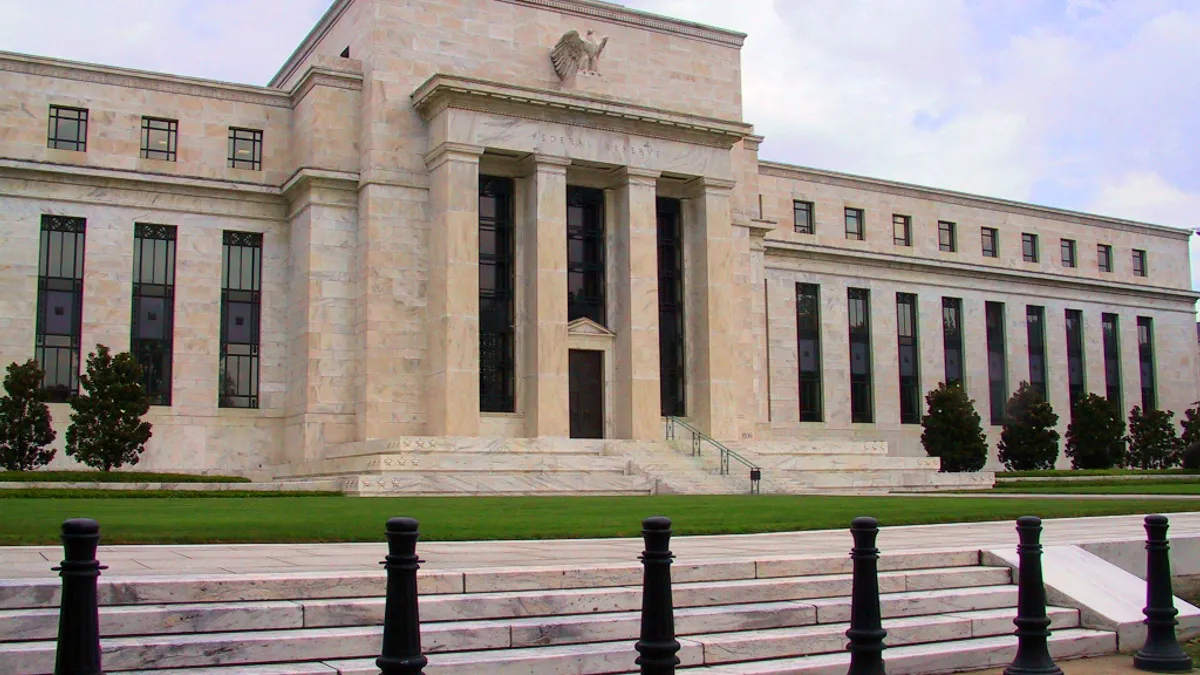Dive Brief:
- Inflation slowed in June as the core consumer price index excluding food and energy rose at the lowest annual rate in more than two years, the Labor Department said Wednesday.
- The 4.8% annual increase last month in core CPI — while outshining economists’ 5% consensus estimate and the 5.3% increase in May — still far exceeds the Federal Reserve’s 2% inflation target. Central bank policymakers will probably follow through on recent comments and raise the federal funds rate by a quarter percentage point at their scheduled July 25-26 meeting, according to economists and traders in futures markets.
- After hiking the main rate this month, the Fed will probably “hold for at least two quarters while it monitors the effect on both inflation and the economy,” said Aleksandar Tomic, director of the graduate programs in applied economics and applied analytics at Boston College. “If we start to see a slowdown [in the economy], the temptation to start easing monetary policy will be very strong and could lead to a resurgence in inflation.”
Dive Insight:
Inflation eased last month because of a fall in prices for several categories of goods and services, including an 8.1% plunge in air fares, 2% pullback in hotel room rates and a 0.5% dip in the price of used vehicles, the Labor Department said.
Shelter prices rose 0.4% in June, slowing from a 0.6% gain in May but fueling most of the 3% annual increase in the so-called headline CPI, which includes volatile food and energy prices, the Labor Department said. Policymakers focus on core CPI as a more reliable indicator of underlying inflation.
The decline in core inflation “is really only a small step in the right direction,” Fitch Ratings Chief Economist Brian Coulton said, noting that shelter price inflation “is edging downwards at only a glacial pace.
“In the context of a still tight labor market and sticky wage growth, the Fed’s recent concerns about inflation persistence are not going away,” Coulton said in an email.
The central bank suspended rate hikes on June 14 even as meeting participants raised their median projection for the federal funds rate at the end of the year to 5.6% from 5.1% in March. The main rate currently is set at a range from 5% to 5.25%.
Since meeting last month, Fed Chair Jerome Powell and several other central bank officials have affirmed that they favor raising the benchmark interest rate at least two more times this year.
“Inflation is too high,” Richmond Fed President Thomas Barkin said Wednesday. “If you back off too soon, inflation comes back strong, which then requires the Fed to do even more.”
Traders in interest rate futures predict that policymakers this month will raise the federal funds rate by a quarter point and hold it at that peak for several months before beginning to trim the benchmark as early as next March.
On Wednesday they set 95% odds that the Fed will increase the main interest rate to a range between 5.25% to 5.5% on July 26, according to the CME FedWatch Tool. Traders see better than even odds that policymakers will trim the benchmark by a quarter point or more at their scheduled meeting in March 2024.
Prices last month “increased at a modest pace,” the Fed said Wednesday in its Beige Book survey of business contacts across its 12 districts. “Several districts noted some slowing in the pace of increase.”
“Price expectations were generally stable or lower over the next several months,” the central bank said.
Like Barkin, Minneapolis Fed President Neel Kashkari on Wednesday cautioned that the central bank may need to step up its fight against inflation.
“If inflation proves to be more entrenched than expected, policy rates might need to go higher, which could further reduce asset prices, increasing pressure on banks,” Kashkari said in a report.
While pursuing the most aggressive monetary tightening in four decades, policymakers have pushed down annual headline CPI to 3% from 9.1% in June 2022. Yet “the toughest part of the inflation fight is definitely ahead,” Tomic said in an email response to questions.
“In my opinion, there is no way to achieve a 2% [inflation goal] within the next two years or so without inducing a recession,” he said.
Fed economists last month predicted a mild downturn will begin later this year.












